Review of popular types of scalars and their breeds
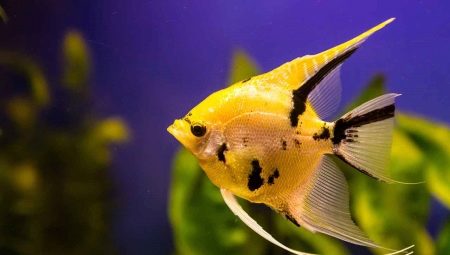
For lovers of aquarium fish, the question often arises - what species to populate the water space so that it looks beautiful. The bright exotic coloring of the scalar makes them frequent "guests" of the aquarists. The large number of available varieties allows you to create a colorful and unusual underwater world at home. To decide which species are preferable, you need to study the features of the color. After all, they all have their own differences.
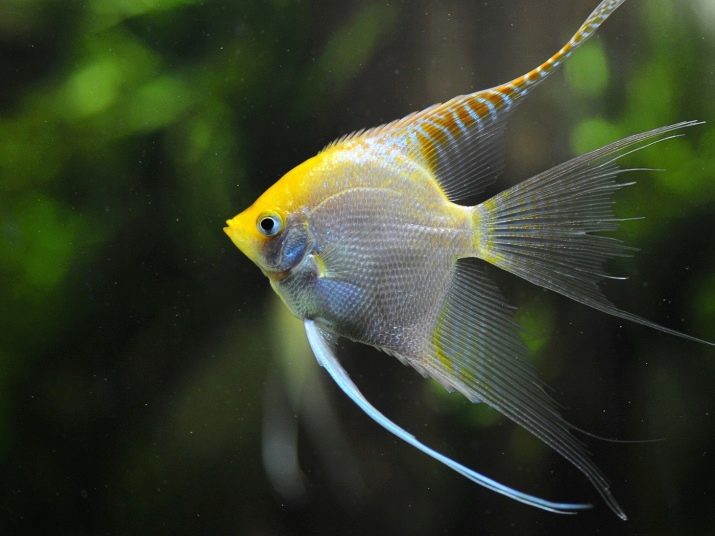
general characteristics
Also often referred to as freshwater angels, scalars have an unusual shape with bulges on the sides and long fins. We can say that their little body looks like a triangle or a crescent. The length of the fish reaches 15 centimeters, and the height, together with the fins, ranges from 25 to 30 centimeters. Those fins that are located on the abdomen resemble filaments in shape, while the rest are larger in size. The surface of the body is covered with small scales.
Males and females look approximately the same, but the former, as is typical for some fish, have a more prominent forehead. Angelfish are often chosen for domestic breeding due to their unusual behavior.
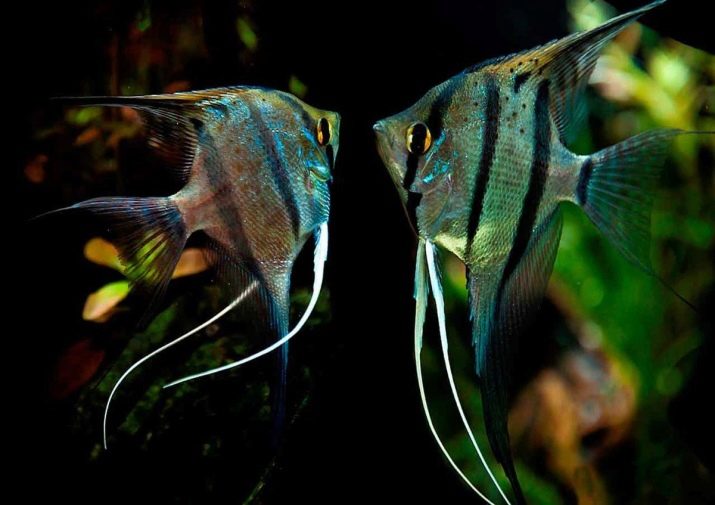
In the first days of entering the aquarium, they behave very smartly and sometimes even leave their small counterparts hungry.
However, over time, they relax and begin to simply swim quietly in the aquarium, waiting for feeding. Fish behave interestingly during the breeding season. The laid eggs are watched by two adult representatives at once, immediately driving away all appearing strangers.
The scalars feel most comfortable in tall, short aquariums, the volume of which is at least 100 liters. They are absolutely picky about food and are ready to eat commercial formulations, living or frozen creatures. The temperature of the water in the tank should be within the range of 24 to 28 degrees Celsius, and the pH should not exceed the range of 6-7.5.
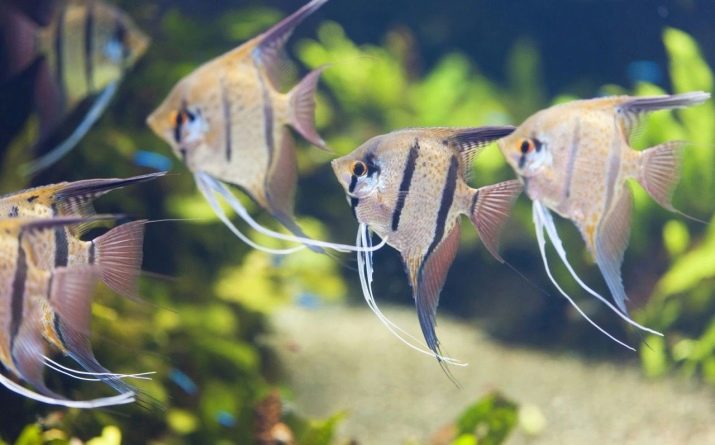
When choosing neighbors for fish, you should focus on a similar level of displayed aggression, which means that it is very low. It is better to purchase them in pairs and be sure to populate them in flocks.
All varieties of scalar are usually divided into three main types: scalar ordinary, scalar altum and scalar Leopold. In nature, fish live in the Amazon, Brazil, Peru and Ecuador, and South America is usually called their homeland. They gather in flocks containing up to a dozen individuals and prefer slow currents with warm and soft water.
Altum breeds overview
Altum scalar is also known as high fin. Varieties native to the Peruvian Amazon River are characterized by a profile height of up to 50 centimeters. In color, the Altum species is similar to the common scalar, but looks brighter due to the clarity and contrast of the color. The main pattern on the body surface is a combination of dark and silver stripes.
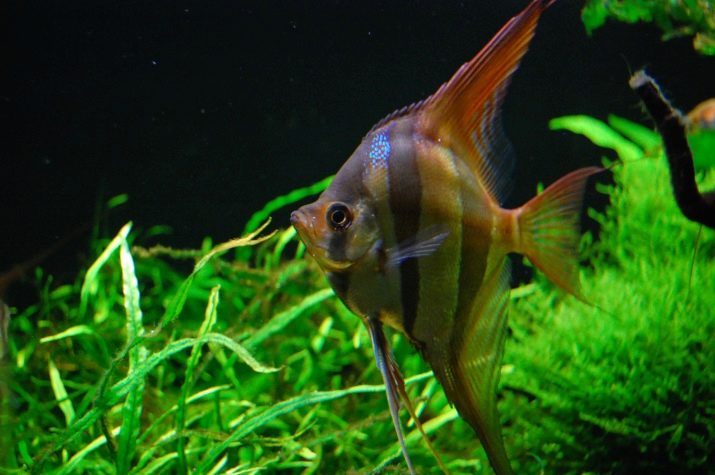
The graceful fins end in threadlike rays that create a very beautiful movement of the fish.
The head protrudes quite noticeably, and there is a small depression on the forehead. Sometimes on the body you can find "shaded" stripes, which are not found in other varieties of scalar. Altum scales themselves are much smaller in size than those of "relatives". This variety is very unpretentious, but for a comfortable habitat, you will still need a fairly voluminous aquarium, as well as the absence of numerous "neighbors".
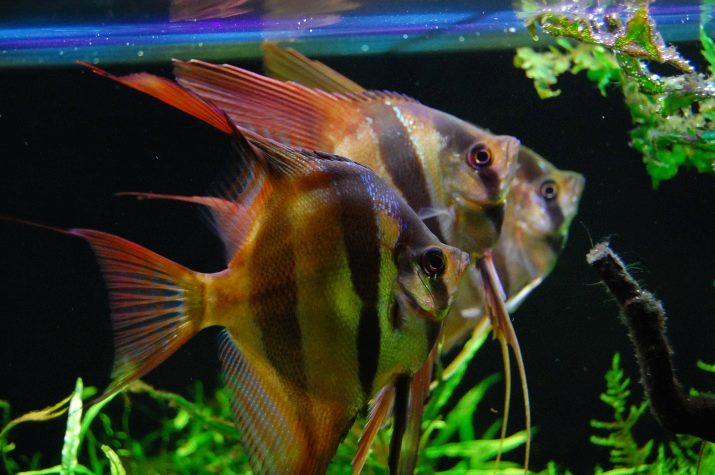
Leopold specimens
Scalaria Leopolda has the smallest size of all subspecies. In length it does not exceed 15 centimeters, but it has a rather impressive front part, which is why it is often referred to as "long-nosed".
Its color may seem boring - pale brown, on which you cannot even see the dark stripes.
The Leopold's fins look more proportional than those of the common variety, which contributes to an improved appearance. Fish live in schools of 6-7 fish. During the breeding season, they are separated in pairs, but after the appearance of the fry, they again unite into a collective.
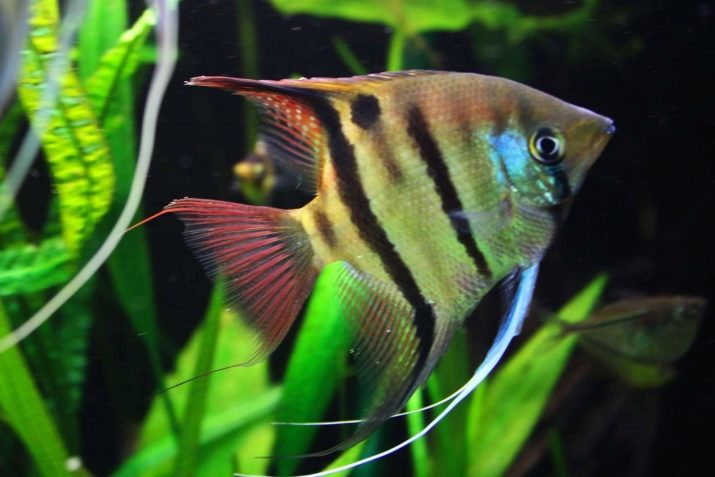
Common scalars
Marble scalar stands out for the lack of traditional striped body paint. Instead, the surface is covered with various specks and streaks, the color of which can be either silver or black.
Each specimen of the marble scalar has an individual pattern, and it is practically impossible to find two identical ones.
The name of the subspecies just appeared thanks to the image - it resembles a section of a piece of marble. Since the size of this species is smaller than the standard one, a pair of individuals will need an aquarium with a volume of 70 liters to settle.
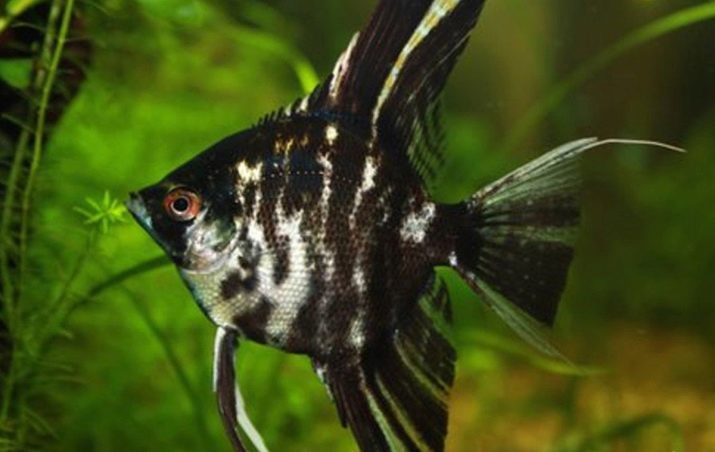
The body of the fish is slightly diamond-shaped. Her fins are rather high, and her tail is straight. On the forehead and back, specks of green or gold are sometimes found. On the fins there is a "pearl scattering" of small specks. The length of the individual is usually 18 centimeters, and the height is about 20 centimeters.
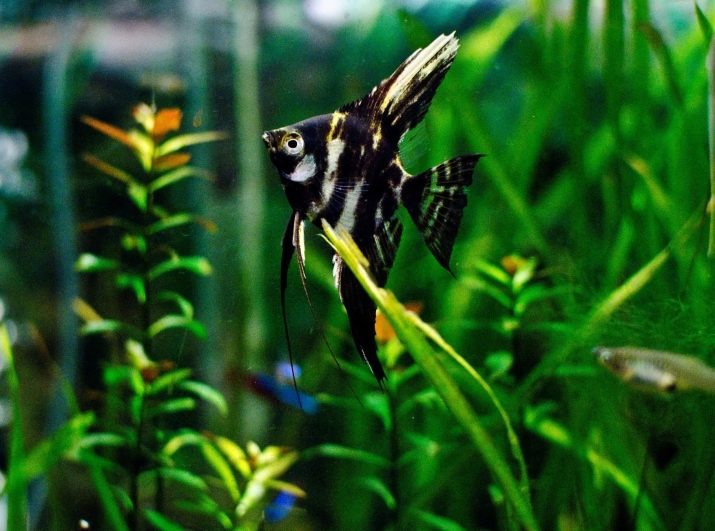
Black scalar is one of the oldest bred forms, and therefore widespread throughout the world. Its height does not exceed 20 centimeters.
Almost the entire surface is painted in a dark gray color, since the strips have been expanding for many years until they "merged" into one whole. Some tails are even completely black and lack translucent veins. One of the subspecies of black scalar is the veil form.

This variety is unpretentious. One individual needs 20-30 liters of clean water, and it is recommended to keep the fish in a flock of at least four individuals. Aeration in the aquarium should work at least 12 hours a day, and the ground should be cleaned once a week using a siphon. Also, once a week, a quarter of the water filling the tank is replaced.

Scalar red devil characterized by the presence of a bright red color. This situation arose due to numerous crosses, for which only those individuals were selected for which the red pigment was present.
The number of black stripes has been reduced to a minimum, and the most expensive are those in which there are no third-party spots in principle.
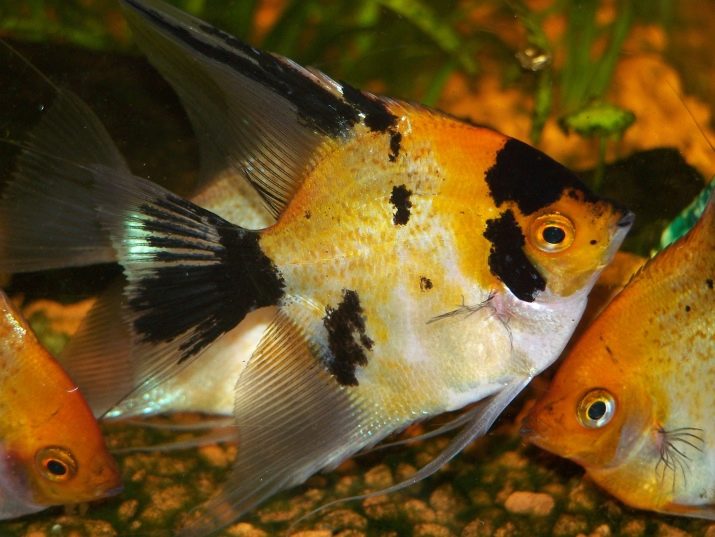
Scalar green angel quite different from other varieties. Instead of traditional stripes, specks are distributed over the entire surface of the body, and fins with scales are painted in a rich green hue.
When the light is natural, the fish just has a dark back and a light belly.
If you add lamps, then it shines. The green angel has to be looked after in the same way as for other representatives of the species. However, it is recommended to supplement feed with dye enzymes. Their use will allow you to maintain a bright color for a long time.
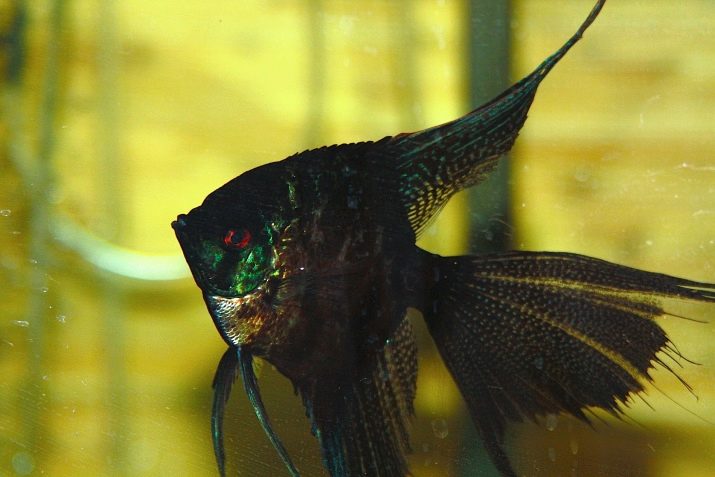
Scalar white has a snow-white shade of a calf, practically devoid of stripes. The transparent fins are also practically devoid of pigment. The white scalar is sometimes confused with the albino scalar, but the latter is easily distinguished by the red iris of the eyes.
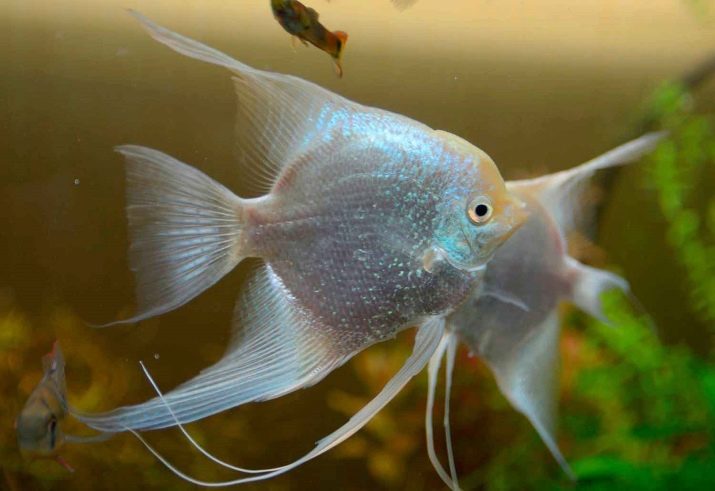
Pearl scalar, as you might guess, has a beautiful mother-of-pearl overflow.
Veil fish stands out with beautifully curved fins, almost transparent.
Their body shape is quite elongated, and the surface is painted in different shades and decorated with different patterns.
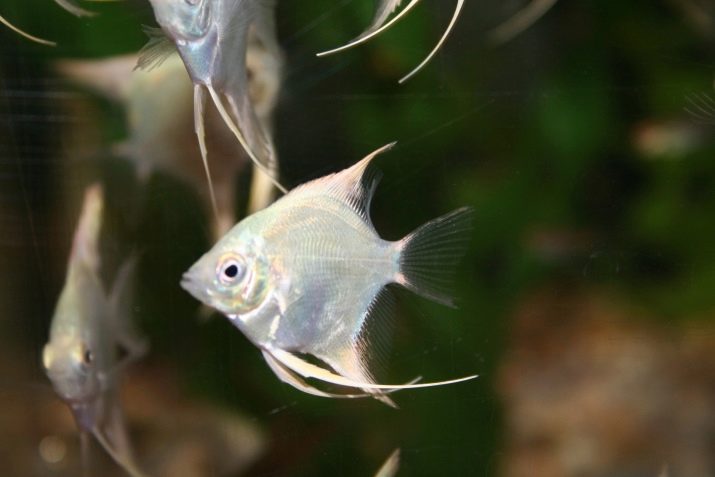
The golden scalar is devoid of stripes. Beautiful scales shimmer with shades of gold, but the fins are absolutely devoid of pigment. As a rule, they are shorter than other species. The body itself is quite large - sometimes it reaches 26 centimeters. The platinum scalar is similar to her, but her color is silver.
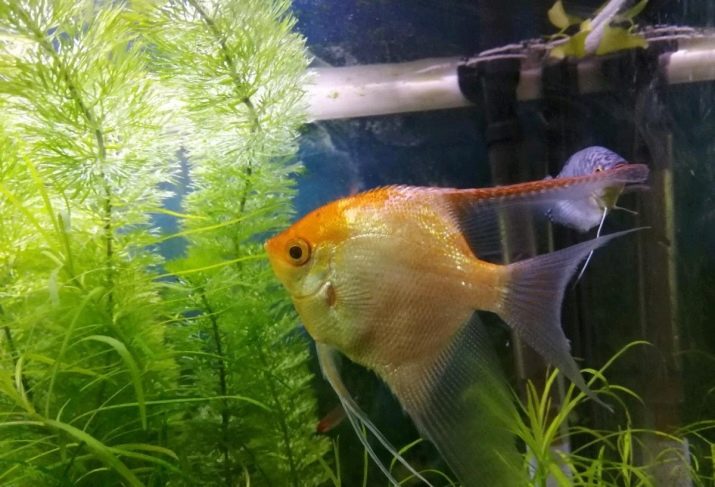
The diamond scalar is close to the gold subspecies. Its color does not contain any yellowish spots, but only a pure silver tone. Some individuals have several dark stripes on the body. Shiny scales sparkle under the rays of light. The fins of the fish are translucent.
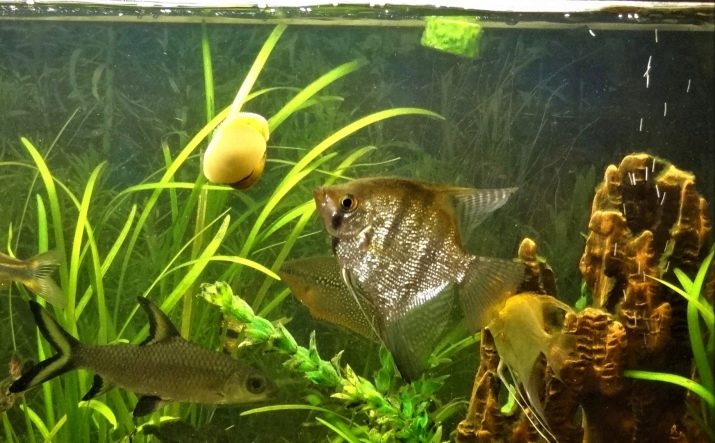
Scalar pink glows in the dark, which compares favorably with other brethren.
Her body is painted in a pale pink shade, and her high fins are practically devoid of pigment.
This type is especially popular due to its uniqueness, and therefore it is quite expensive. It is important to mention that the pink fish is still poorly understood.
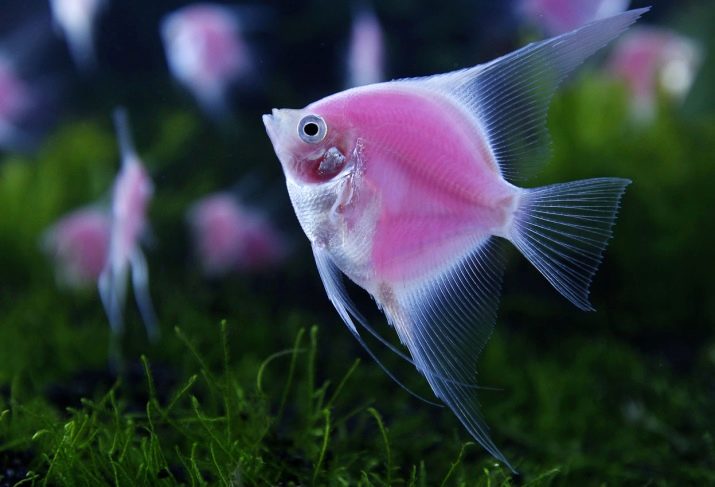
Scalar zebra, the second name of which sounds like striped, has brightly outlined stripes, the number of which exceeds four. This color allows you to successfully hide from predators.
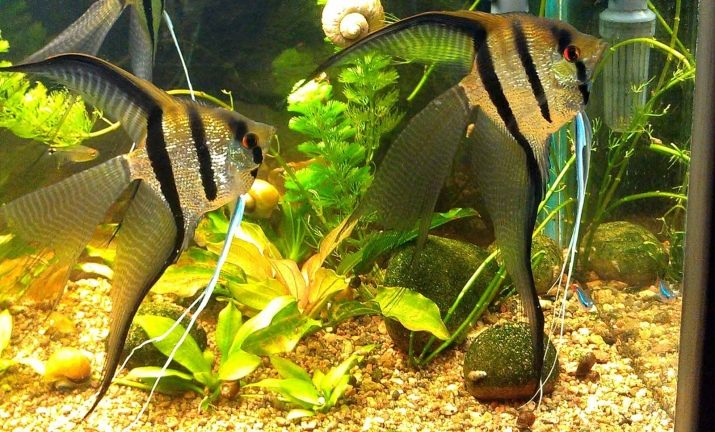
Scalaria paraiba possesses a double gene of asexuality. Its second name sounds like a phantom. The color of the creatures is pale blue with pearl tints.
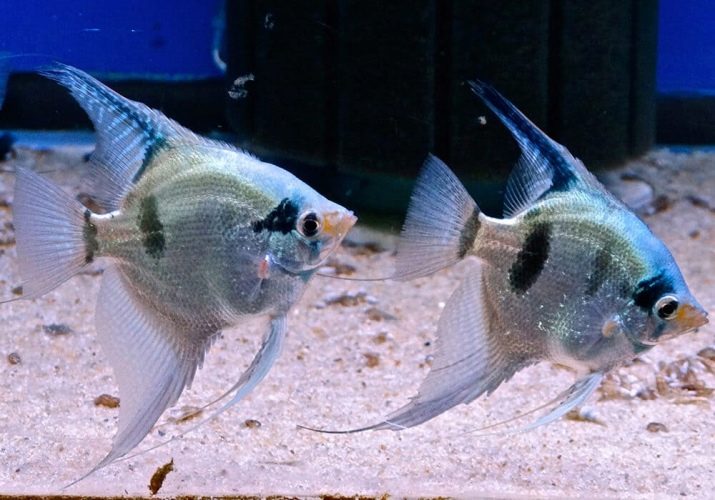
Blue scalar has a beautiful color, uniform for both body and fins. Its most famous form is the pina scalar.
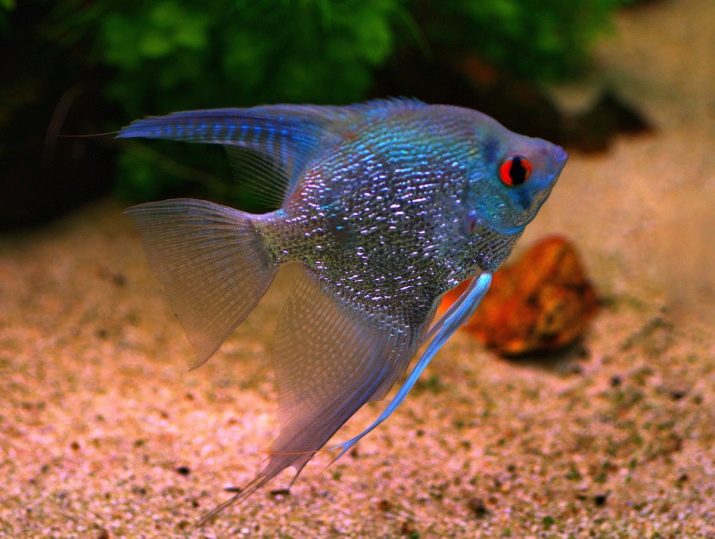
Scalaria manacapuru was introduced to Europe in the 60s of the last century, but in Russia it still remains poorly studied.
The harmonious body shape is slightly different in males and females.
For example, in males, there is no hump on the nose characteristic of the general appearance, in addition, there is no bend in the fins.
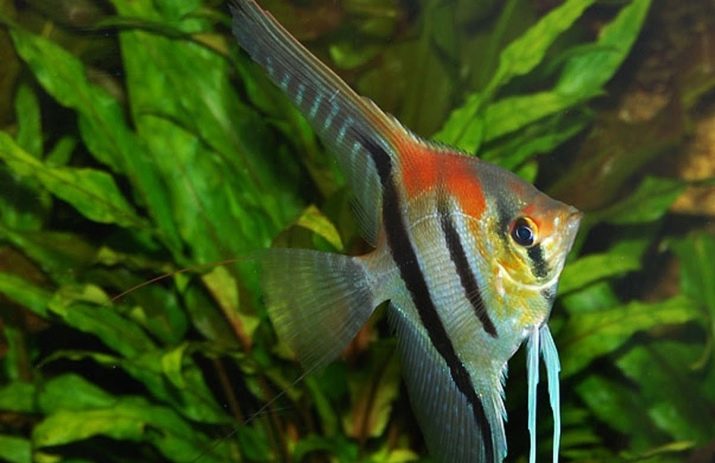
Scalaria rio-nanai reaches a length of 30 centimeters. The height in natural conditions is 30 centimeters, but in an aquarium it rarely exceeds 20 cm.
The surface of the body is covered with well-defined vertical stripes, dirty brown specks, and also turquoise spots on the gills.
Calm and non-aggressive fish are usually populated in flocks of 4-6 individuals.
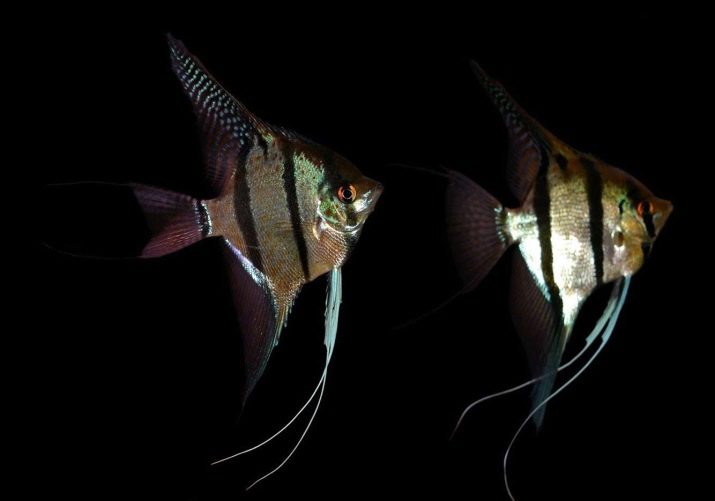
Scalaria bicolor is a rare but very unusual fish species. Its size is similar to the size of "relatives", but the color is quite different.
The classic colors are used - silver and black, but they are not placed in ordinary stripes.
Instead, the surface is covered in two tones, separated by a fairly clear border at the base of the tail. Thus, the front part of the scalar is lighter than the back, it is darker. Some individuals still show stripes, but in this case their value decreases, which means that the price falls.
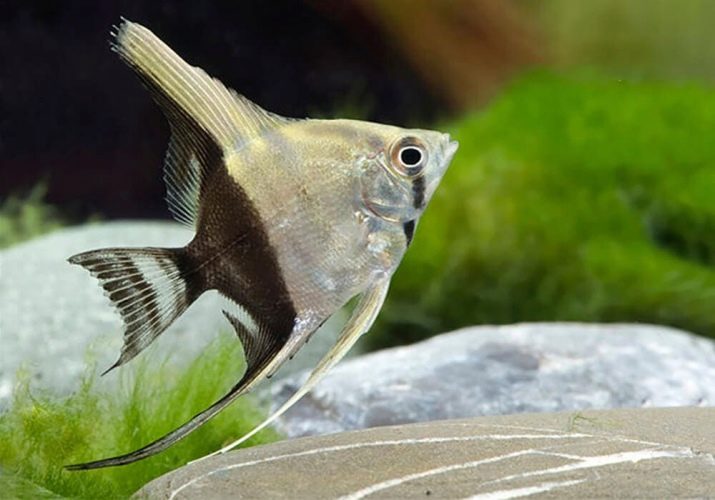
Scalar leopard in many ways similar to marble. However, shades of silver and black are used in equal amounts. The unusual name comes from the location and shape of the spots. The black patterns are reminiscent of the coloration of a leopard.

Scalar koi has a color corresponding to the color of koi carp. The white background is covered with black streaks, and the color of the forehead ranges from red to yellow. Each individual has an individual pattern on the body.
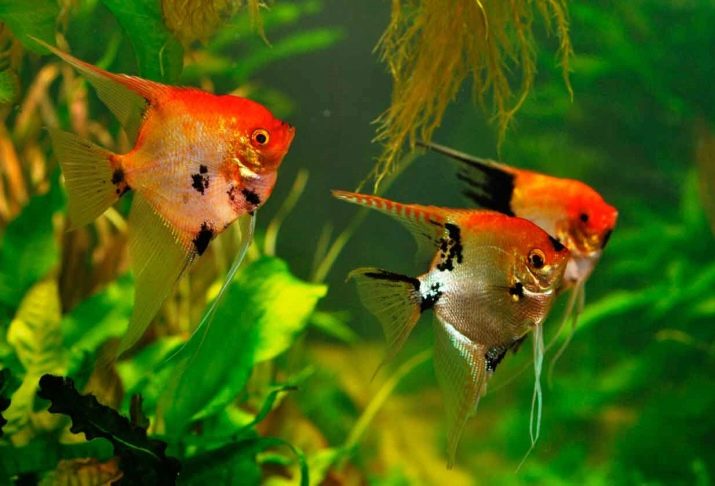
For the types and care of scalars, see below.








